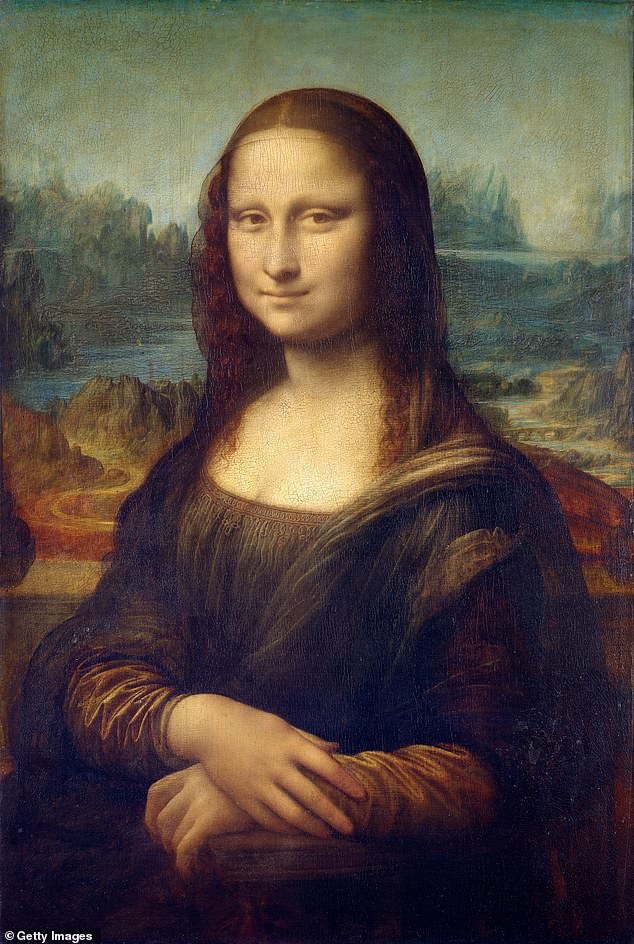The reason why the Mona Lisa smiles is revealed: Leonardo may have been joking, says an expert after the landscape behind the painting was finally identified.
Just as geology seems to have solved the mystery of the landscape in the Mona Lisa painting, identifying it as Lecco on the shores of Lake Como, it is now shedding new light on another secret of Leonardo’s masterpiece: his fascinating smile.
The Renaissance scholar with a complex knowledge of geology may have had fun with a geological pun, according to new research.
Greg Sereda, an amateur art historian, has made a connection between the mountainous area just north of Lecco, with its two main mountains, Grigna Settenrionale and Grigna Meridonale, and a local dialect word, ‘grignà’, meaning ‘smile’ .
He told MailOnline: “The play on words ‘grignà’ may be the key to his smile.”
The mystery behind Mona Lisa’s enigmatic smile may have finally been revealed and it could all be an inside joke about a local dialect word for smile.
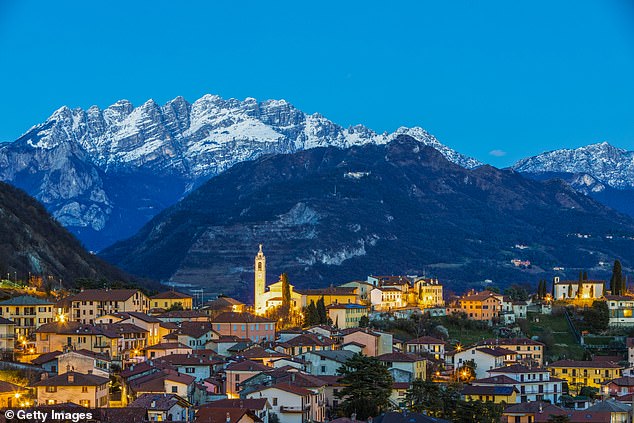
The mystery of the landscape of the Mona Lisa painting has now been solved and identified as Lecco on the shores of Lake Como (File Image)
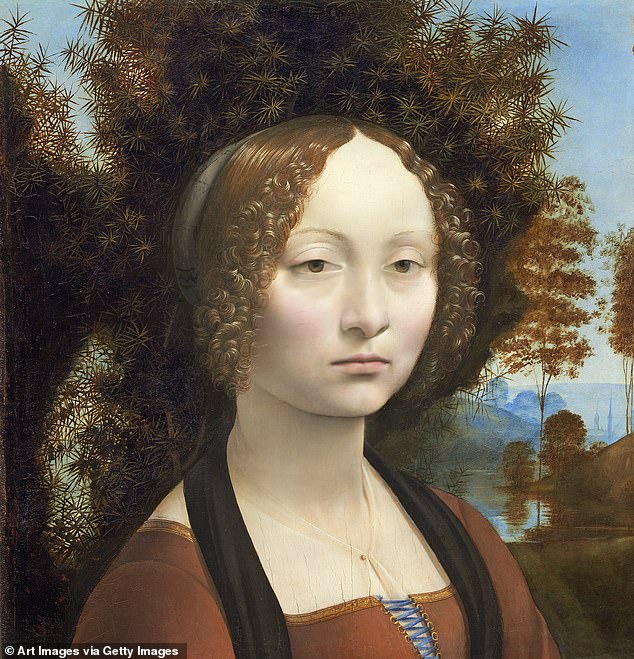
Unlike his most famous painting, Da Vinci’s Ginevra de Benci does not have a mysterious smile on her lips.
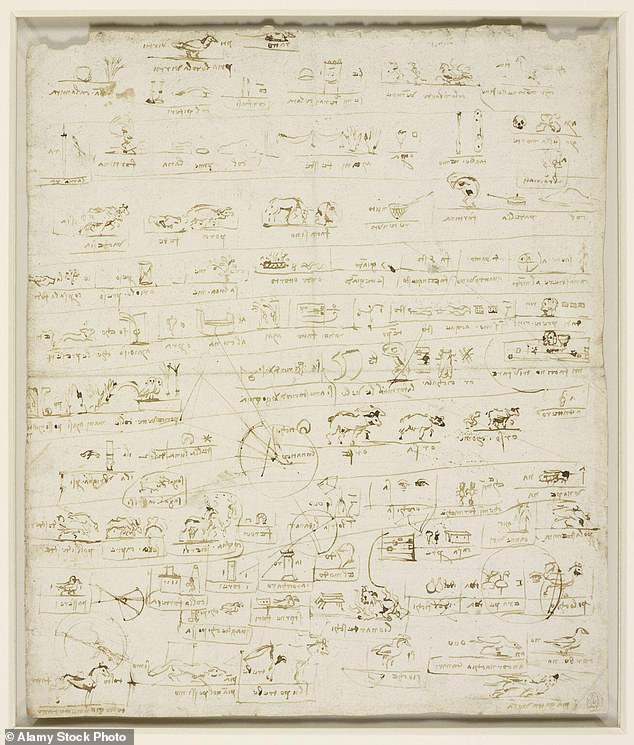
The Renaissance scholar had a deep knowledge of mathematics, languages, geology, sciences and art.
Last week, he contacted Ann Pizzorusso, a geologist and historian of Renaissance art, who used her expertise in both fields to suggest that Leonardo painted several recognizable features of Lecco, in the Lombardy region of northern Italy: its bridge Azzone Visconti from the 14th century. , the southwestern Alps that dominate the area and Lake Garlate.
She presented her findings at a geology conference in Lecco last weekend, and when Mr. Sereda told her about his discovery, she smiled at its significance: “I understood the pun immediately. Leonardo had traveled a lot in this area and geology has just revealed the secret of Mona Lisa’s smile.’
She said: “A little-known aspect of Leonardo’s talent was that he had a great sense of humour, composing riddles and word games.”
In Leonardo’s portrait of Cecilia Gallerani, for example, Ludovico Sforza’s young lover holds a stoat, and although the word ‘galée’ in Greek means stoat, it has been interpreted as a pun on both the subject’s name and the a declaration of its purity. . There are also examples of Leonardo’s pictorial puns in the Royal Collection.
Ms. Pizzorusso said: “In her portrait of Ginevra de’ Benci in the National Gallery in Washington, Ginevra is a play on the word ‘juniper’ and she put a juniper in that image, an element of nature. . ( Juniper refers to her chastity, the greatest virtue of a Renaissance woman.) So if I put a tree on it, I could put a mountain on it.’
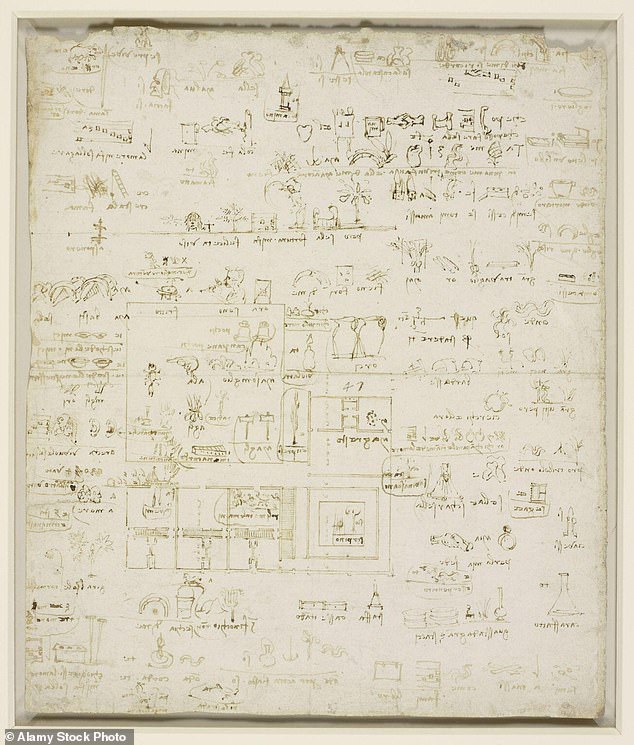
A page of his sketches including an annotated architectural plan.

Da Vinci’s Lady with an Ermine, another of the mysterious portraits of the famous Renaissance artist
And he added: ‘Because it is in the Lombard dialect, only the locals know this word ‘grignà’. Our case becomes more mysterious, stronger and fully verifiable when we connect it with the mountain and its smile.’
Jacques Franck, Leonardo’s former adviser at the Louvre in Paris, where the painting is housed, described the theory as “very interesting”: “However, I think Leonardo probably first symbolized Lisa’s name, Giocondo, which means happy in Italian. , by depicting her smiling. Naturally, an additional reference to her “smile” related to Mount La Grigna cannot be excluded.’
Michael Daley, director of watchdog ArtWatch UK, said: “I can see a link between the enigmatic smile and the landscape after Ann Pizzorusso’s animist rock exhibition. Leonardo had created a pictorial simulacrum of the universe in a single work. .. We can approach the smallest and most subtle details of the figure and at the same time understand its place within the all-encompassing fecundity and plenitude of the changing landscape, which extends to a cosmic infinity that nevertheless retains lucidity .’
Sereda has long been researching Leonardo during his free time as a registered nurse in Ontario, Canada. He was “completely captivated” by the Mona Lisa’s similarities to the Lecco landscape and had been investigating possible hidden meanings, which led him to the wordplay “grignà”.
But, having failed to interest a couple of art historians with his findings, he is now even more excited by Ms. Pizzorusso’s reaction.
Since she revealed her geological findings last week, she has been inundated with emails and calls from ordinary people who had long wondered if Lecco was the location of the Mona Lisa, but couldn’t prove it. But now he has used geology to confirm it, showing that the Lecco rocks are limestone and that Leonardo accurately depicted his in a greyish-white color: “I’m coordinating all the rock formations and saying they all match.” ‘
And he added: “You can’t believe the amount of emails I receive from people all over the world who analyze painting from different perspectives. Although for them this is a hobby – they are specialists in their field, literature, linguistics, knowledge of the area -, they approach the painting by focusing on certain aspects and commenting on them precisely. Leonardo was very multidisciplinary. Now the common man has a voice and everything is taking shape.’

